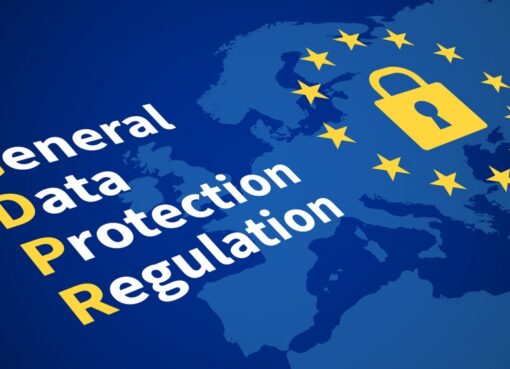Contents
Understanding Building Security Management
Building security is the protection of property, assets, and occupants from intruders, perpetrators of violence, and unsafe or hazardous situations that can cause them harm or damage. Its goal is to deter, prevent, detect, and respond to physical security violations effectively. Underestimating the importance of building security puts everything and everyone within the building at risk, including the actual work or commercial activities taking place. Building and tangible assets security is crucial for the smooth flow of operations within an organization. As such, it encompasses a multifaceted approach to protect people, assets, and information within the built environment. This involves using tools such as Building Information Modeling (BIM).
Building Information Modeling (BIM) meanwhile, involves the creation, management, and utilization of digital models to represent the physical and functional characteristics of a building project. BIM is the holistic process of creating and managing information for a built asset. Based on an intelligent model and enabled by a cloud platform, BIM integrates structured, multi-disciplinary data to produce a digital representation of an asset across its lifecycle, from planning and design to construction and operations. It has therefore emerged as a revolutionary tool that streamlines project workflows, improves collaboration and optimizes building design. However, its impact extends beyond these benefits. BIM also plays a crucial role in enhancing physical security within the built environment.
Related: What’s BIM? Understanding the Revolutionary Construction Technology
How BIM Aid Building Security Management
1. BIM Enables Early Identification of Security Vulnerabilities
One of the primary advantages of BIM is its ability to identify potential security vulnerabilities at the early stages of the design process. BIM essentially involves the digital representation of physical and functional characteristics of places. Security personnel can then use these models to visualize and assess potential weak points or risks in building design. This early identification allows for timely modifications and the implementation of appropriate security measures, ensuring that the building is more resilient to security threats.
2. Seamless Integration of Security Systems
BIM facilitates the seamless integration of various security systems within the building design. Systems such as access control systems, video surveillance, intrusion detection systems and fire alarm systems can be integrated early on in a building design courtesy of BIM. This enables the effective planning and management of crisis management protocols such as fire response. It’s therefore crucial that security stakeholders ensure the proper placement and coverage of these systems. The integration of security systems within the BIM model enhances coordination among different stakeholders and ultimately improves the overall effectiveness of security interventions.
3. Simulation and Testing
BIM’s simulation capabilities enable stakeholders to conduct virtual testing and evaluation of security measures. Through realistic 3D visualizations and simulations, security professionals can analyze and optimize security strategies, emergency evacuation plans and response procedures. This virtual testing allows for the identification of potential weaknesses, enabling stakeholders to make informed decisions and refine security plans before construction begins. This would also enable security managers perform emergency response drills within a virtual world thereby preventing accidents.
4. BIM Enhances Collaboration and Communication
BIM serves as a central platform for collaboration and communication among various stakeholders involved in building security management. Security consultants, architects, engineers, contractors and facility managers can all access and contribute to the BIM model. As far as security management is concerned, this has the benefit of ensuring that security considerations are effectively communicated and implemented throughout the project lifecycle. This collaboration fosters a holistic approach to security by reducing the risk of overlooking critical security aspects of a building.
5. Maintenance and Lifecycle Management
BIM’s data-rich environment enables efficient maintenance and lifecycle management of security systems. By linking the BIM model with asset management systems, stakeholders can access essential information regarding security equipment, maintenance schedules and system specifications. This integration ensures that security systems are adequately maintained, upgrades are planned and potential vulnerabilities are proactively addressed throughout the building’s lifecycle. This proactive approach ensures that the building’s security remains up to date and responsive to emerging threats.
6. BIM Improves Emergency Response Planning
BIM aids in the development of robust emergency response plans by providing detailed information about the building’s layout, escape routes and critical infrastructure. Emergency responders can access digital representations of a building to gain vital insights into the building’s structure and accessibility. This ultimately enhances their ability to plan and execute effective emergency response strategies. BIM can therefore significantly reduce response times, save lives and minimize damage during emergencies.
Conclusion
Building Information Modeling (BIM) has transformed the construction industry by revolutionizing project workflows and collaboration. However, its impact extends far beyond efficiency gains. BIM also plays a pivotal role in enhancing physical security within the built environment. By leveraging it’s capabilities in planning, simulation, and access control, stakeholders can identify vulnerabilities and implement effective security measures. BIM therefore aids building security management countless number of ways. It’s therefore crucial for security professionals to leverage its capabilities to enhance security, mitigate risks and create secure environments for building occupants. How can security professionals harness the power of BIM for enhanced building security management?


How IRES Helps You Harness the Power of BIM for Better Security Management
Are you passionate about making a difference in building security management? Are you eager to enhance your skills and stay ahead in the rapidly evolving world of security management? Look no further! Indepth Research Institute (IRES) will transform your security response by equipping you with the requisite skills on Building Information Modeling (BIM).
Why Choose Our BIM Training?
1. Expertise and Experience. We bring a wealth of expertise and experience in BIM training born from 15 years of operation. Additionally, our team of skilled trainers have in-depth knowledge of various BIM systems and can guide you through the intricacies of working with BIM.
2. Comprehensive Curriculum. Our BIM training programs cover all the essential aspects of Security-mindedness, Built Asset Security Strategy, Built Asset Security Management Plan, Breach Management Plan and Built Asset Security Information requirements.
3. Hands-On Learning. We believe in learning by doing. Our training program incorporates hands-on exercises and practical simulations to ensure you gain practical experience using BIM models. You’ll have the opportunity to practice real-world scenarios and develop the necessary skills to excel in your role.
4. Customized Approach. We understand that each organization has unique security requirements. That’s why our training is tailored to meet the specific needs of different security sector professionals. We ensure that the training aligns with your role and helps you make the most of BIM systems in your daily work.
5. Continuous Support. Our commitment to your success extends beyond the training program. We provide ongoing support to address any challenges you may encounter during your BIM systems implementation. Our team is dedicated to helping you succeed and leveraging the full potential of BIM in your workplace.
Don’t miss out on the opportunity to enhance your career and contribute to the future of security management with BIM training from IRES. Register for our newsletter and be the best version of yourself!
[wpforms id=”1678″ title=”true” description=”true”]
We have a firm belief that every organization has a unique purpose only they can fulfil in this world. We work with you in organizing your resources to exploit opportunities so that you can fulfil your purpose and realize full potential. We build the capacity of people, processes and systems for organizational success and growth as well as nurturing a thriving ecosystem.
Ready to enhance your skills and boost your career? Explore our corporate training programs now and start your journey to success.








Comment here